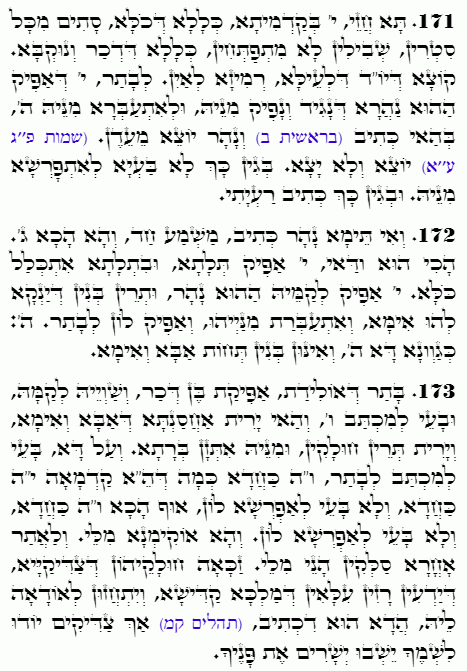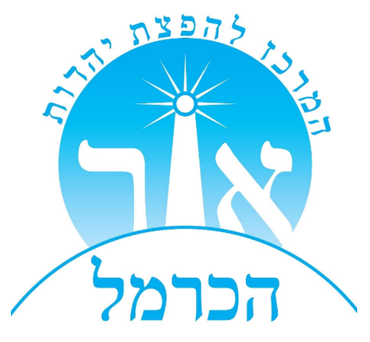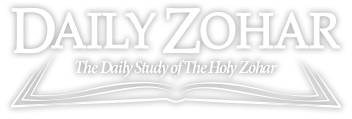Daily Zohar # 4627 – Acharei Mot – How to write the Holy name
Daily Zohar 4627

Hebrew translation:
172. וְאִם תֹּאמַר, כָּתוּב נָהָר, מַשְׁמָע אֶחָד, וַהֲרֵי כָּאן שְׁלֹשָׁה? זֶה כָּךְ וַדַּאי. י’ מוֹצִיאָה שְׁלֹשָׁה, וּבִשְׁלֹשָׁה הַכֹּל נִכְלָל. י’ מוֹצִיאָה לְפָנֶיהָ אוֹתוֹ נָהָר, וּשְׁנֵי בָנִים שֶׁמְּנִיקָה הָאֵם, וְהִתְעַבְּרָה מֵהֶם, וּמוֹצִיאָה אוֹתָם אַחַר כָּךְ. ה’ – כְּמוֹ כֵן ה’, וְהֵם בָּנִים תַּחַת הָאָב וְהָאֵם.
173. אַחַר שֶׁהוֹלִידָה, הוֹצִיאָה בֵּן זָכָר, וְשָׂמָה אוֹתוֹ לְפָנֶיהָ, וְצָרִיךְ לִכְתֹּב ו’, וְזֶה יוֹרֵשׁ אֶת נַחֲלַת הָאָב וְהָאֵם, וְיוֹרֵשׁ שְׁנֵי חֲלָקִים, וּמִמֶּנּוּ נִזּוֹנֵית הַבַּת. וְעַל כֵּן צָרִיךְ לִכְתֹּב אַחַר כָּךְ ו”ה כְּאֶחָד, כְּמוֹ שֶׁהֵ”א רִאשׁוֹנָה י”ה כְּאֶחָד, וְלֹא צָרִיךְ לְהַפְרִידָם. אַף כָּאן ו”ה כְּאֶחָד, וְלֹא צָרִיךְ לְהַפְרִידָם. וַהֲרֵי בֵּאַרְנוּ אֶת הַדְּבָרִים. וְהַדְּבָרִים הַלָּלוּ עוֹלִים לְמָקוֹם אַחֵר. אַשְׁרֵי חֶלְקָם שֶׁל הַצַּדִּיקִים שֶׁיּוֹדְעִים אֶת הַסּוֹדוֹת הָעֶלְיוֹנִים שֶׁל הַמֶּלֶךְ הַקָּדוֹשׁ וּרְאוּיִים לְהוֹדוֹת לוֹ. זֶהוּ שֶׁכָּתוּב (תהלים קמ) אַךְ צַדִּיקִים יוֹדוּ לִשְׁמֶךָ יֵשְׁבוּ יְשָׁרִים אֶת פָּנֶיךָ.
.
Zohar Acharei Mot
Continued from previous DZ
#171
Come and see, the letter ‘Yod’ (י) at the beginning of the name YHVH (יהוה) encompasses everything and is concealed from all sides; its paths are not open. It includes both male and female, which are the supernal Aba (Father) and Ima (Mother). The Yod represents Aba, and the two letters that fill the Yod (the Vav and Dalet in the full spelling of Yod, יוד) represent Ima, and they are concealed and not open. The thorn at the top of the Yod symbolizes ‘אַיִן’ ‘Ayin,’ which is Keter, and it is called ‘אַיִן’ ‘Ayin’ because it represents the absence of comprehension, as it is beyond grasp.
Afterward, the Yod brought forth from itself, which is the secret of Eden, the river that flows and emerges, which is Binah, and it impregnates her with a son and daughter, which are represented by the letters Vav and Dalet, and the Hei (ה) whose form hints at Zeir Anpin (the Vav) and Malchut (the Dalet) that are enclosed within it. Regarding this Hei, it is written, ‘וְנָהָר יֹצֵא מֵעֵדֶן’ ‘And a river goes out of Eden’—it says ‘goes out’ in the present tense, implying it always flows, not ‘went out’ in the past tense.
Therefore, this Hei does not need to separate from the Yod, and thus it is written ‘רַעְיָתִי’ ‘My spouse’ regarding this Hei, as it remains with the Yod like two companions who are never separated from each other.
Notes:
The Yod (י), which begins the holy name YHVH, is a profound symbol that encapsulates all aspects of creation while remaining hidden and incomprehensible. It represents the unification of the divine masculine and feminine principles (Aba and Ima).
The small thorn atop the Yod symbolizes Keter, the highest of the Sefirot. It represents an unknowable aspect of the Creator, referred to as ‘אַיִן’ ‘Ayin’ (Nothingness, or ‘Ein Sof,’ Endless) because it is beyond human comprehension.
The Yod gives rise to Binah (upper ה), symbolized by a continuous flow of Light from the Endless, ‘אַיִן,’ represented by the river flowing out of Eden. This flow is constant, signifying the ongoing process of creation and Life Force.
The Hei (ה), representing the feminine Binah, remains forever connected to the Yod. This connection is depicted as a permanent and harmonious union, illustrating the inseparable nature of unity in the upper three levels. The relationship between the Yod and Hei is described as two companions who are never apart, emphasizing the completeness and harmony within the structure of the Tree of Life.
#172
If you say, ‘But the term’ river’ (נהר) is written in the singular, implying only one, yet here we are speaking of three: Binah, who is pregnant with Zeir Anpin, and Malchut, as mentioned above.’ The answer is: Indeed, it is so. The Yod (י) brought forth three, and in these three, everything is encompassed. The Yod brought forth before it this river, which is Binah, and two offspring that the mother (Ima) nurses and becomes pregnant with, which she brought forth afterward. The Hei (ה) is in the form of this letter Dalet (ד), and within it is the Vav (ו), which is the small leg inside the Hei, and these Dalet and Vav are the offspring beneath Aba (Father) and Ima (Mother), whom Ima is pregnant with, as mentioned above.
#173
After Binah gave birth, she brought forth a male child and placed him before her—this child is Zeir Anpin. It is necessary to write the letter “Vav” (ו), which symbolizes the son, who is Zeir Anpin after he has already been born and brought outside to his place. This son inherits the inheritance of Aba and Ima, meaning he receives the Mochin of Yud-Hei (יה), which are Aba and Ima (Chokmah and Binah), even though they do not relate to him in the aspect of his emanation. Rather, it is in the secret that “since three come out from one, one stands in three,” as mentioned in Beresheet A, page 287, “Three emerge from one, and one stands within three,” meaning this is as if they are passed to him as an inheritance.
Zeir Anpin inherits two portions: one for himself and one for Malchut, from which the daughter (Malchut) is nourished. Therefore, it is necessary to write afterward “Vav-Hei” (וה) together, one after the other, just as the first Hei is connected together with the Yud, meaning Yud-Hei (יה), and there is no need to separate them (as discussed above in #169). So, too, here, Vav and Hei are together and should not be separated. We have already explained these matters, and these things here ascend to another place. Blessed are the Tzadikim who know the upper secrets of the holy King and are worthy to give thanks before Him, as it is written:
Psalm 140:14
“אַךְ צַדִּיקִים יוֹדוּ לִשְׁמֶךָ יֵשְׁבוּ יְשָׁרִים אֶת פָּנֶיךָ.”
“But the righteous shall give thanks to Your name; the upright shall dwell in Your presence.”
Notes:
The connection between Zeir Anpin and Malchut is symbolized by the letters “Vav-Hei” (וה), which must be written together to represent their inseparable bond. This reflects a broader principle of unity within the YHVH structure, where the Sefirot are interconnected and flow from one another in harmony. The Zohar praises the Tzadikim, who understands these profound spiritual truths and can acknowledge the wisdom inherent in the relationships and the representation of the YHVH name.
Friday would be a good day to make a ** Donation, especially if you didn’t donate in the past week. Giving on Friday, which is an aspect of Yessod, expands the vessel for the Light and honor of Shabbat.
** Your donation doesn’t have to be given to the same place every week. You can alternate or split your donation among those who benefit you spiritually.
 Support – Ohr HaCarmel Yeshiva
Support – Ohr HaCarmel Yeshiva
Tap here: Ohr HaCarmel Donation Page to make your contribution and make a spiritual connection to Israel.
The Yeshiva Ohr HaCarmel (which means the Light of the Carmel) is on top of Mount Carmel, where the prophet Elijah’s prayers were answered.

 Previous: Acharei Mot
Previous: Acharei Mot

